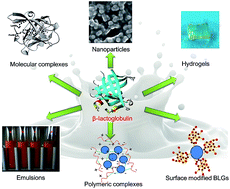Beta-lactoglobulin-based encapsulating systems as emerging bioavailability enhancers for nutraceuticals: a review
Abstract
In the past few decades, encapsulation has emerged as a promising strategy to enhance the bioavailability of poorly absorbed nutraceuticals. Proteins as natural polymers are generally recognized as safe (GRAS), and they exhibit unique advantages such as natural abundance, amphiphilic nature, satisfactory biodegradability, and desirable functional properties. Beta-lactoglobulin (BLG) is the major component of whey protein and a natural transporter for a number of nutrients. The superior functionality along with marked resistance against peptic digestion enables the preparation of diverse forms of BLG-based encapsulating and delivering vehicles for bioactive compounds. This review article starts with introducing the basic concepts on encapsulation, together with the advantageous properties of BLG with emphasis on the structure–function relation. Afterwards, delivery systems in different forms (simple molecular complexes, nanoparticles, nanoemulsions, and gels) using BLG alone or combining BLG with other polymers are compared systematically with regard to their strengths, weaknesses, and potential applications. Lastly, the challenges and prospective areas of study related to BLG-based delivery systems are discussed.



 Please wait while we load your content...
Please wait while we load your content...